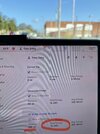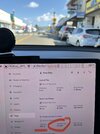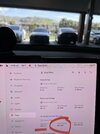AlanSubie4Life
Efficiency Obsessed Member
The good news is this problem which is not normal will probably get worse.Results from service appointment. Summary: Tesla took no action during the appointment, told me the battery is fine and tried to explain that basically the range indicator isn't reliable. I went there, talked to someone for 10 mins and then I left with the car. Car was never seen by Tesla.
The employee said there is no service they can perform. They said they already remotely diagnosed the battery and there were no faults. I asked them if they could do a more comprehensive assessment by for example plugging into the OBD and he basically said there is nothing else they can do that would yield additional information.
This begs the question when their remote assessment does show a fault, what do they do to further investigate?
I received a convoluted speech about how the range indicator is an estimate that varies often, etc. He kept referencing the “15V” low voltage system and made it seem like that played a role in the shutdown which did not make sense to me. No mention of the BMS.
There was no acknowledgment from Tesla that the range indicator was incorrect. It was basically, battery is fine, range is an estimate, don’t take your battery below 10%, have a nice day.
Pretty disappointing.
I would report this issue to service as the car shutting down without any warning (according to your information anyway, though I assume it did warn you about low charge levels in general). It’s not really related to how many miles you have left, and would not talk about that next time it happens.
Definitely post next time you get stuck.
Also it would be interesting to get more info on the specific cases in question, as discussed. Was it a continuous discharge from 20% (after car was allowed to sleep), or from 60-80%?
Probably makes a difference, given apparent BMS estimate jumpiness at the moment.
It’s very common for people to target 5% arrival, and drive fast to hit that target, and this shutdown was very close to that. Usually a bit more optimal to arrive slightly higher since charging is slow at very low voltage, but still…





